3
Top of the Flops?
Posted by Vero
on
19:16
in
amiga,
amiga cd32,
atari,
dreamcast,
n-gage,
n64,
neo geo,
nintendo,
sega saturn,
shenmue,
snes,
virtual boy
I found this article on Digital Spy and simply had to share it - how many of these can you own up to? Me? I've pretty much owned or wanted all of them.

First up we have a console that made the headlines for all the wrong reasons. The Virtual Boy, hurriedly released to fill the void between the SNES and the N64, is considered Nintendo’s only commercial hardware failure.
The system wasn’t quite portable nor was it handheld. Players would don a cumbersome headset and control sprites using a pad not unlike that of the future Gamecube. Nintendo billed the device as the first handheld console capable of displaying "true 3D graphics", but in actual fact the machine merely created the illusion of depth through the 'parallax' effect.
The Virtual Boy's rushed release played a big part in its downfall. A limited range of launch titles and poor third-party support meant it received a less than favourable reception from the public, and reports of its monochromatic use of red LED lights causing migraines didn't help matters.
Constant price drops couldn't save this one, which ended up selling just 770,000 units before it was discontinued after a year.
After parting company with the system's designer Gunpei Yokoi - who went on to create a rival handheld system for Bandai - Nintendo appeared to have learned its lesson from the debacle, opting to invest in new incarnations of its ever-reliable Gameboy.
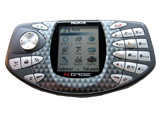
At number nine, we move from pseudo 3D to the real thing with Nokia’s N-Gage.
Released in 2003 - predating the DS and PSP by more than a year - this taco-shaped system was heavily criticised for its impractical design, but not for its versatile MP3 and video capabilities.
Nokia's glorified mobile phone was the first handheld device capable of handling 3D graphics, but a poor selection of games, rampant piracy, memory management issues and a sky-high launch price set the console up for a fall. The arrival of the Nintendo DS and Sony’s PSP a year later only made things worse.
Despite its commercial failure as a games platform (and a mobile phone for that matter), the N-Gage was home to the odd gem. Pocket Kingdom: Own The World, Tom Clancy's Splinter Cell Chaos Theory and Pathway To Glory are all worth a look should the opportunity arise.
The system continues to sell in India and China.
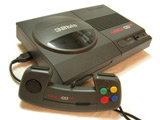
In April 1994, Commodore International was left wondering what might have been after a crippling lawsuit brought the curtain down on its empire.
Released in September 1993, Commodore’s Amiga CD32 promised so much when it was unveiled as the first games console to harness CD-ROM capabilities. Essentially an Amiga 1200 optimised for gaming, it was possible to turn the system into a PC by adding a peripheral mouse, keyboard and hard drive.
Commodore’s 32-bit system was anything but a flop upon its UK launch, securing over 50% of the CD-ROM market on these shores during its brief lifespan, fending off competition from the MegaCD, Philips Cdi, and even the PC CD-ROM.
After a successful launch in Canada, the stage was set for the CD32 to take the US market by storm, but an injunction filed against Commodore stopped the console’s stateside launch from ever taking place. The company owed a backlog of unpaid royalties to Cad Track for use of its XOR patent, and when a High Court judge ruled that Commodore be prohibited from importing anything into the United States, it was the beginning of the end for the company and its 32-bit console.
With the CD32’s US launch stopped in its tracks, European sales alone were not enough to save Commodore from liquidation. Despite debuting at the top of the European hardware charts, the CD32 was discontinued months after its launch.
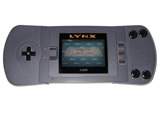
In 1989, Atari released a highly innovative handheld system known as the Lynx - it’s just a shame they didn’t bring out any decent games to support it.
The Atari Lynx was the first portable console to display colour graphics, offer local networking and even an ambidextrous design. Its games, however, were about as much fun as unnecessary surgery. Combine this with a battery consumption to rival Sega’s Game Gear and its clunky design, and we have another fine example of why Atari should have stuck to the software market.
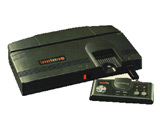
In the late 1980s, NEC tried its luck in the console market with the Turbo Grafx-16. After an extremely successful Japanese launch, the 16-bit machine looked set to be a global smash until Nintendo spoiled the party.
At that time, Nintendo signed anti-competitive agreements with its third-party developers, preventing them from making games for both the NES and the Turbo Grafx-16. Such practices were made illegal soon afterwards, but not before it crippled NEC’s console’s US launch, condemning it to the proverbial scrap heap.

Leave it to Atari to release a so-called 64-bit machine in a 16-bit world that still sinks like a lead balloon. Released in November 1993 with only the technically inferior SNES, Mega Drive and the horribly over-priced 3DO as competition, Atari’s last-ditch attempt at delivering a successful console looked set to be fruitful.
Despite being marketed as a 64-bit machine under the slogan “do the math,” the Jaguar was in fact a 32-bit console with a 64-bit graphics card. Here’s some maths for you Atari: An overpriced console plus three decent games equals a meagre 250,000 units sold in its first year.
Although the Jaguar bombed commercially, enduring homebrew support has elevating it to cult status.
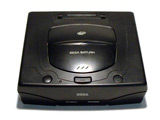
Many children would be reduced to tears on Christmas day 1995 when they awoke to find a Sega Saturn under the tree instead of a PlayStation.
Released several months before Sony’s PlayStation, the Saturn lasted just three years before Sega dropped it like a bad habit. The console received a commercial clobbering from Sony’s bestseller, which ended up shifting more units than any other system of its generation.
The Saturn was backed by a massive library of games, but with a good/bad ratio that was hardly in its favour. Its complex multi-processor hardware proved inhospitable to third-party developers and a poor European launch combined with marketing woes meant the Saturn ended up selling only 9.5 million units worldwide.
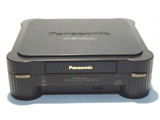
In 1993, Panasonic learned a lesson Sony would do well to take on board: a ridiculously over-priced console is unlikely to be a bestseller.
The 3DO was originally conceived by EA Games founder Trip Hawkins. The console enjoyed a high-profile launch, being named Time magazine’s “Product of the Year” in 1994 and garnering much attention in other media due to its cutting-edge technology.
Its catalogue of games was fairly strong, with ports of PC CD-ROM titles such as Mystand Alone In The Dark being particularly successful, along with a nicely polished conversion of Street Fighter II Turbo.
Panasonic did themselves no favours setting the system’s price at $699.95 (£470). At the time of launch the console market was over-saturated, with Sega, Nintendo, Commodore, SNK and Atari all battling it out for dominance. The company’s refusal to drop the price led to a lack of third-party support, and once higher quality CD-ROM-based consoles such as the Saturn and the PlayStation emerged in the mid-90s, the 3DO was doomed.
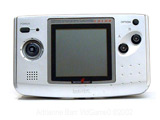
The first incarnation of Neo Geo’s handheld system hit the shelves in 1998, but modest sales prompted the company to withdraw the monochrome wonder in favour of its16-bit colour-displaying successor.
Neo Geo appeared to have learned from Sega and Atari’s mistakes in the handheld market by offering good battery support, a bargain price and strong third-party support. Initial sales were strong, but the arrival of Nintendo’s Gameboy Advance knocked this one out for the count and prompted Neo Geo to abandon its efforts in the hardware market.

If there is one console in history that was criminally overlooked it is the Sega Dreamcast. Launched in the fall of 1998 in Japan and a year later in the US, Sega’s last effort in the console market was a victim of the bad reputation the company had garnered during the mid-1990s with its 16-bit add-ons frenzy and the Saturn’s tenure.
Despite delivering what was arguably one of the best consoles of its generation, Sega was shunned by casual gamers and third-party developers alike, leading to it bowing out of the console market for good.
The console was hailed as ahead of its time due to its advanced hardware and online capabilities. A highly acclaimed software library including such gems as Shenmue, Crazy Taxi, Soul Calibre and the best-selling Sonic Adventure helped it to successfully supersede the PlayStation and Nintendo 64, but the unveiling of the PlayStation 2 made it look like a system caught in limbo between two generations.
The Dreamcast sold just 10.6 million units worldwide during its three-year lifespan, but has remained popular in Japan, where new games were still being licensed for it until last year.
